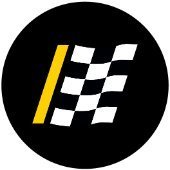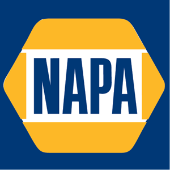-
Welcome to Auto Parts Forum
Whether you are a veteran automotive parts guru or just someone looking for some quick auto parts advice, register today and start a new topic in our forum. Registration is free and you can even sign up with social network platforms such as Facebook, X, and LinkedIn.
Auto Parts Manufacturers Share Their Perspectives
-
Similar Topics
-
By Advance Auto Parts
RALEIGH, N.C.--(BUSINESS WIRE)-- Advance Auto Parts, Inc. (NYSE: AAP), a leading automotive aftermarket parts provider in North America that serves both professional installers and do-it-yourself customers, will report financial results for its first quarter ended April 19, 2025, before the market opens on Thursday, May 22, 2025. The company has scheduled a conference call and webcast to begin at 8:00 a.m. ET on Thursday, May 22, 2025.
A live webcast will be available on the company’s Investor Relations website (
link hidden, please login to view). To join by phone, please link hidden, please login to view online for dial-in and passcode information. Upon registering, participants will receive confirmation with call details and a registrant ID. A replay of the conference call and webcast will be available on the company’s Investor Relations website for one year. About Advance Auto Parts
Advance Auto Parts, Inc. is a leading automotive aftermarket parts provider that serves both professional installers and do-it-yourself customers. As of December 28, 2024, Advance operated 4,788 stores primarily within the United States, with additional locations in Canada, Puerto Rico and the U.S. Virgin Islands. The company also served 934 independently owned Carquest branded stores across these locations in addition to Mexico and various Caribbean islands. Additional information about Advance, including employment opportunities, customer services, and online shopping for parts, accessories and other offerings can be found at
link hidden, please login to view.
Investor Relations Contact:
Lavesh Hemnani
T: (919) 227-5466
E: [email protected]
Media Contact:
Nicole Ducouer
T: (984) 389-7207
E: [email protected]
Source: Advance Auto Parts, Inc.
link hidden, please login to view -
By NAPA
ATLANTA, April 29, 2025 /
link hidden, please login to view/ -- Genuine Parts Company (NYSE: GPC), a leading global service provider of automotive and industrial replacement parts and value-added solutions, announced that its shareholders elected Ms. Laurie Schupmann as a new director of the company. Additionally, Messrs. Gary Fayard and Johnny Johns and Mses. Betsy Camp and Wendy Needham have each reached the mandatory retirement age for board members and have stepped down from their roles as directors. Prior to her retirement in 2023, Ms. Schupmann spent nearly 40 years with PwC, an audit and assurance, consulting and tax advisory firm, serving in various leadership roles of increasing responsibility, including as a Global Client Partner from October 1995 to June 2023.
link hidden, please login to view -
By Counterman
Stellantis celebrated a major milestone with the opening of its new Mopar Parts Distribution Center (PDC) in East Fishkill, New York. The $64 million facility enhances parts distribution across the Northeast and supports both dealers and customers.
Leadership and Community Support
Mopar leaders and a Dutchess County legislator spoke to state officials,
link hidden, please login to view partners, UAW leaders and employees. They emphasized the new facility’s impact on customer service in the local community. Commitment to Growth and Service
“The launch of our new Mopar Parts Distribution Center in East Fishkill marks a significant investment in our long-term growth and service capabilities,” said Mopar Senior Vice President for North America Darren Bradshaw. “This facility supports our dedicated UAW-represented workforce with the tools and environment they need to succeed. By integrating cutting-edge technology and automation, we’re strengthening our supply chain, accelerating delivery times and reinforcing our commitment to dealer and customer satisfaction along with employee success.”
Mopar Parts Distribution Center Capacity and Strategic Positioning
The 534,000-sq.-ft. facility is strategically located to serve dealerships and customers across the Northeast. It houses over 46,000 unique parts and expects to process more than 2 million shipments each year.
Boosting Local Economy and Infrastructure
“The launch of the Mopar Parts Distribution Center is a tremendous boost for East Fishkill,” said Dutchess County Legislator Steve Caswell. “This facility is not just an investment in infrastructure, but in our people, our businesses and our future. Stellantis’ decision to bring this advanced distribution center and nearly 100 jobs to our community underscores our town’s potential as a growing hub for technological and economic development.”
Introducing Next-Generation AutoStore Technology
This Mopar PDC is
link hidden, please login to view’ first U.S. facility using the AutoStore automated storage and retrieval system. AutoStore includes 40 robotic units using advanced technology to move along a grid above stored parts. They retrieve parts from 70,000 bins across 18,000 square feet and deliver them to processing stations. PDC employees then prepare the final shipments for distribution. Enhancing Efficiency and Inventory Management
AutoStore automation boosts speed, accuracy and dependability of order completion. It also reduces the warehouse footprint needed for storing inventory.
Sustainability and the Mopar Parts Distribution Center
The East Fishkill Mopar Parts Distribution Center is one of 21 Mopar facilities in North America serving dealers and aftermarket customers. Mopar merged the Tappan and Boston PDCs to reduce the region’s storage footprint. The AutoStore system further decreases the physical space needed at the new East Fishkill location. These efforts support Stellantis’ broader goal of lowering carbon emissions.
The post
link hidden, please login to view appeared first on link hidden, please login to view.
link hidden, please login to view -
By Counterman
RBR Truck Parts, with three locations in Texas, recently joined
link hidden, please login to view. Founded in 2018, RBR Truck Parts LLC is a heavy-duty parts distributor serving the Dallas/Fort Worth metroplex. The company provides aftermarket parts for all truck makes and models. RBR caters to owner-operators, local fleets, service centers and municipal accounts. It offers high-quality products to keep their customers’ vehicles running efficiently. Strategic Location in a Major Trucking Hub
The Dallas/Fort Worth metroplex is home to 8.5 million people across more than 200 cities. It is a major hub for the trucking industry. RBR’s Hutchins, Texas, location sits near Interstate 45, just 250 miles north of Houston. Houston ranks among the nation’s largest ports. RBR also operates near a large rail/container yard and major warehouse operations. This allows the company to serve the region’s trucking needs effectively. Its heavy-duty network connection strengthens its position in this critical market.
Product Selection and Facilities Support Growth
RBR serves a diverse customer base throughout North Central Texas. The company stocks a wide selection of aftermarket truck parts. These include engine components, suspension parts, brake systems, wheels and tires, filters, fluids and accessories. The Hutchins location includes a 14,000-sq.-ft. showroom and warehouse. A 5,000-sq.-ft. facility in Duncanville and a 7,000–sq.-ft. branch in Fort Worth support operations. Owner Rony Santos and general manager Cesar Perez lead the RBR team.
Partnering with Power Heavy Duty for Continued Success
“RBR Truck Parts is a well-established business known for honesty, integrity, and their strong ties in the community,” said Jim Pennig, vice president of business development,
link hidden, please login to view Heavy Duty Family of Companies. “They are dedicated to growing their business with quality parts from Power Heavy Duty’s network of supplier partners, and we look forward to supporting them with great programs and true group value.”
The post
link hidden, please login to view appeared first on link hidden, please login to view.
link hidden, please login to view -
-
By APF
When selecting parts for a car repair, it pays to know the differences between original and aftermarket parts. Whenever possible, get estimates for both.
Choosing between original and aftermarket car parts — and even used parts of either type — is all about squaring your priorities with your budget.
You’ll have different options depending on the part and the shop. And the best choice will depend on whether you’re trying to keep repairs cheap, restore your car’s appearance after a wreck or soup up your ride.
» SIGN UP: link hidden, please login to view
Before we get into that, here are the key differences:
Original equipment manufacturer (OEM) parts match those that came with your car, and are of the same quality as its original parts. They’re also the most expensive. Aftermarket parts are cheaper, and made by other manufacturers — often several, giving you more options. Used parts may have a bit of wear and tear, but should be inspected or rebuilt to ensure they’ll work. These are the cheapest option. Choosing between aftermarket and OEM parts
Your decision will depend on the type of repair and the quality and price of the parts. Always look for parts that come with a warranty, even if they’re OEM, so you’ll be protected in case they fail.
Auto body repairs
Some aftermarket parts may be OK for
link hidden, please login to view, but others won’t be as good, says Michael Calkins, manager of technical services at AAA. “There’s a lot of variation in quality.” For example, he says, aftermarket parts often don’t have the same level of rustproofing as original parts, fit and finish don’t match, or panels don’t align properly. If OEM parts are used in auto body repair, the car should look and work exactly as it did before the damage, because everything will match up. OEM parts are also crash-tested, unlike many aftermarket parts.
Aftermarket parts come at varying price points and levels of quality, but because they are cheaper, insurance companies often prefer them. If you want OEM parts but are dealing with an insurer that wants the shop to use aftermarket parts, ask to pay the difference.
“There’s also the option of used parts, depending on the age of the vehicle,” Calkins says. “It may be cheaper than an aftermarket part but still have all of the original quality.”
Mechanical repairs
A used part, whether it’s OEM or aftermarket, can really save money on repairs under the hood, so long as it’s inspected first and warrantied. And some aftermarket companies reverse-engineer their products to be even better than OEM versions.
For example, many car buffs will tell you that you can get heavy-duty shocks and struts or brake pads that are made of stronger materials. Scan some reviews online, or talk with your mechanic if you’re not sure whether an aftermarket part could be an upgrade.
Adding some extras
If you’d like to modify your ride by adding something like a backup camera or back-seat TV screen, you’ll probably be looking for aftermarket parts. Certain aftermarket upgrades could increase
link hidden, please login to view. This is especially true for improvements like a better sound system or alloy wheels, rather than mechanical repairs. Who provides OEM or aftermarket parts?
The options you’ll have for parts depends on the nature of the repairs and what type of shop you take your car to:
Dealership repair shops will offer only OEM parts — they have no reason to offer a cheaper product from a competitor link hidden, please login to view may be able to offer you a choice between OEM and aftermarket parts Independent garages that specialize in your type of vehicle will likely have both, but with quicker access to OEM parts, including used OEM parts, which can really save you Auto body shops can offer both, but if your collision repair is part of an insurance claim, the insurer will likely prefer aftermarket parts to save money Depending on the job, the cost of OEM versus aftermarket parts varies. Whenever you’re given the choice, ask to see estimates for both so you can weigh your options.
Source:
link hidden, please login to view
-





Recommended Posts
Join the conversation
You can post now and register later. If you have an account, sign in now to post with your account.
Note: Your post will require moderator approval before it will be visible.